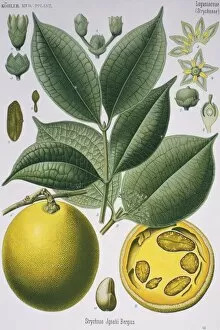Strychnos Collection
Strychnos, also known as the poison nut or strychnine tree, is a fascinating plant with a dark reputation
All Professionally Made to Order for Quick Shipping
Strychnos, also known as the poison nut or strychnine tree, is a fascinating plant with a dark reputation. Its white flowered appearance may deceive you, but within lies a deadly secret. Strychnos nux-vomica, commonly referred to as the St. Ignatius bean, contains strychnine - a potent neurotoxin. Curare, derived from Strychnos toxifera, is another intriguing substance associated with this genus of plants. Used by indigenous tribes in South America for centuries as a paralyzing agent during hunting activities and even in warfare. The combination of the strychnine tree and ginseng root creates an interesting blend of medicinal properties. While one brings danger and toxicity, the other offers vitality and rejuvenation. Despite its lethal nature, Strychnos ignatii has found its place in traditional medicine as well. The St. Ignatius bean possesses unique alkaloids that have been utilized for various therapeutic purposes throughout history. It's important to note that while these plants hold significant medical potential when used responsibly under professional guidance; their misuse can lead to severe consequences due to their toxic nature. Strychnos encompasses several species with diverse characteristics ranging from poisonous nuts to beans used medicinally across different cultures worldwide.













